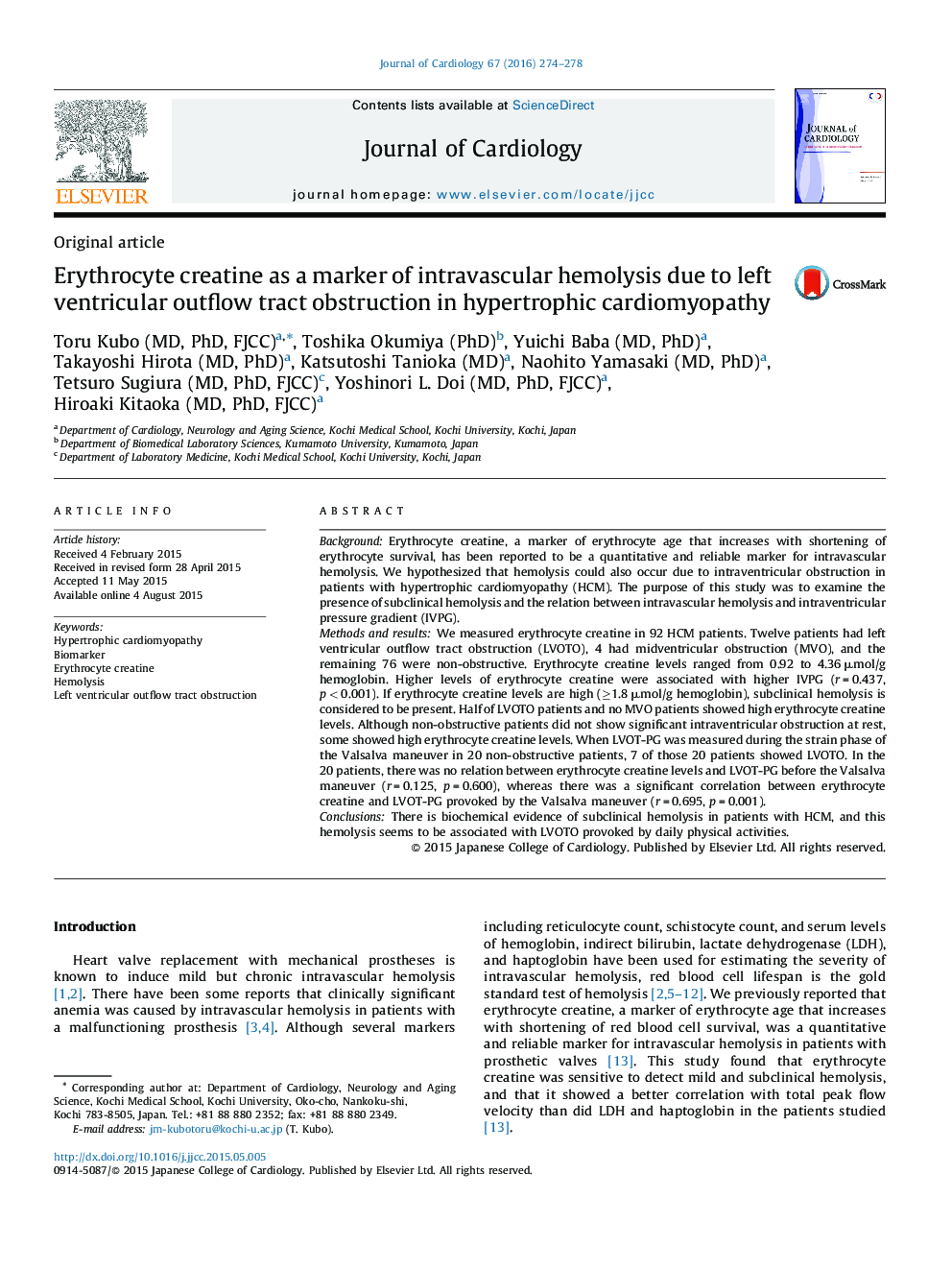| Article ID | Journal | Published Year | Pages | File Type |
|---|---|---|---|---|
| 2962740 | Journal of Cardiology | 2016 | 5 Pages |
BackgroundErythrocyte creatine, a marker of erythrocyte age that increases with shortening of erythrocyte survival, has been reported to be a quantitative and reliable marker for intravascular hemolysis. We hypothesized that hemolysis could also occur due to intraventricular obstruction in patients with hypertrophic cardiomyopathy (HCM). The purpose of this study was to examine the presence of subclinical hemolysis and the relation between intravascular hemolysis and intraventricular pressure gradient (IVPG).Methods and resultsWe measured erythrocyte creatine in 92 HCM patients. Twelve patients had left ventricular outflow tract obstruction (LVOTO), 4 had midventricular obstruction (MVO), and the remaining 76 were non-obstructive. Erythrocyte creatine levels ranged from 0.92 to 4.36 μmol/g hemoglobin. Higher levels of erythrocyte creatine were associated with higher IVPG (r = 0.437, p < 0.001). If erythrocyte creatine levels are high (≥1.8 μmol/g hemoglobin), subclinical hemolysis is considered to be present. Half of LVOTO patients and no MVO patients showed high erythrocyte creatine levels. Although non-obstructive patients did not show significant intraventricular obstruction at rest, some showed high erythrocyte creatine levels. When LVOT-PG was measured during the strain phase of the Valsalva maneuver in 20 non-obstructive patients, 7 of those 20 patients showed LVOTO. In the 20 patients, there was no relation between erythrocyte creatine levels and LVOT-PG before the Valsalva maneuver (r = 0.125, p = 0.600), whereas there was a significant correlation between erythrocyte creatine and LVOT-PG provoked by the Valsalva maneuver (r = 0.695, p = 0.001).ConclusionsThere is biochemical evidence of subclinical hemolysis in patients with HCM, and this hemolysis seems to be associated with LVOTO provoked by daily physical activities.
